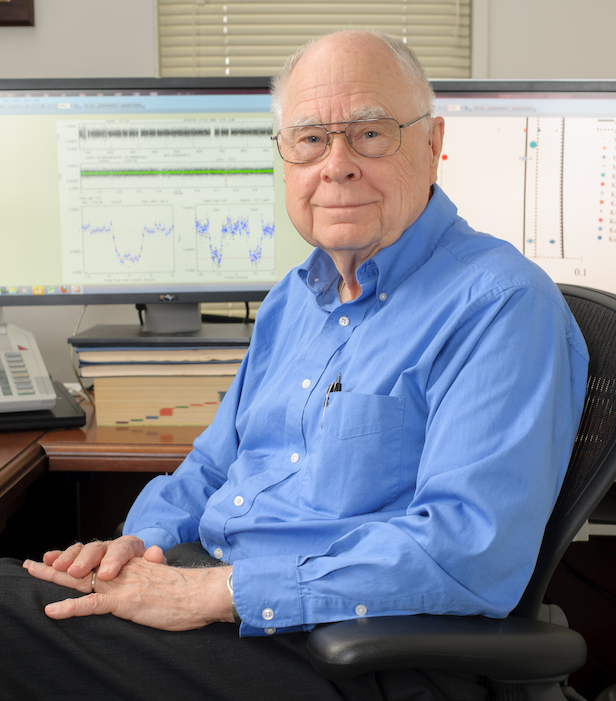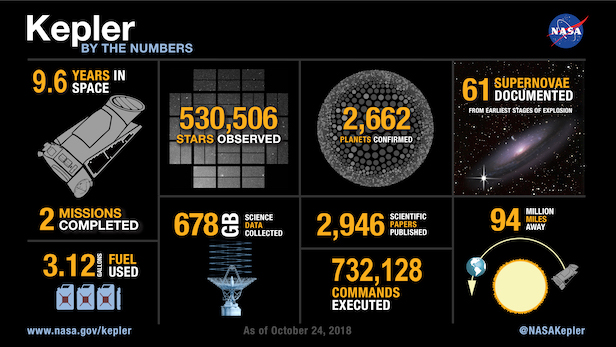Heroes of Space: William Borucki
He persisted with the idea that we could detect extrasolar planets and was proved right

Borucki remained the chief investigator for the Kepler space telescope until his retirement in 2015. Image credit: NASA Ames
As a cub scout, William Borucki recalls peering through a telescope at a night sky filled with stars. It was, he said, the moment when he felt a connection with space and it sparked a lifelong and curious obsession to find out more. At that moment in his life, he dreamed of the possibilities of potential new worlds. That he ended up having a major hand in detecting scores of Earth-size planets around other stars in the habitable zone seems rather fitting in retrospect.
Borucki was born in Chicago in 1939 and he grew up in a small town called Delavan in Wisconsin. He spent time as a young boy launching homemade rockets, fuelling his desire to study for a masters in physics at the University of Wisconsin. Graduating in 1962, he immediately found work at NASA. He would stay there for 53 years, spending the first ten years studying the radiation environment of entry vehicles as he worked on designing heat shields for the Apollo missions.
During the 1970s, he developed photochemical models of the Earth’s stratosphere and mesosphere as part of the Theoretical Studies Branch, with the aim of investigating the impact of nitric oxide and fluorocarbon emissions on ozone. But it was in the early 1980s that he began the work which would go on to define him. In the face of scepticism, he published a paper that detailed how planets in other solar systems could be detected by measuring light in terms of its perceived brightness to the human eye. He proposed using the transit method, believing the observation of the periodic dimming of a star would point to a planet passing in front of it, blocking some of the light.
Others scoffed and said that no technique could make such observations. Undeterred, he continued making proposal after proposal in his attempt to persuade NASA that it would be an efficient way to discover exoplanets. It must have been a disheartening experience; Borucki was turned down in 1992, 1994, 1996 and 1998 with NASA citing the lack of suitable detector technology, costs, risk and concerns a specially designed telescope called Vulcan would not perform well in the harsh environment of space. But he would not give up.

The Kepler space telescope retired in October 2018, after over nine years in space and two missions completed. Image credit: NASA/Ames/Wendy Stenzel
As time went on, he gathered greater levels of support, particularly after 1995 when an exoplanet called 51 Pegasi b was discovered, opening the possibilities of there being more. Eventually, his efforts paid off and in 2000, NASA gave the nod to the Kepler mission as the tenth Discovery class mission. It has proven to be revolutionary.
As such, following years of hard work, Borucki became the Principal Investigator for the mission. The Kepler Space Telescope launched on 6 March 2009 from Launch Complex 17B at Cape Canaveral Air Force Station in Florida aboard a Delta II rocket and, while that was a couple of years later than expected, Borucki said it was the highlight of his career, the culmination of some 25 years of graft and persistence. His belief has more than paid off.
Today, the Kepler mission is seen as historic mission. Even when the second of four reaction wheels on the spacecraft was lost in May 2013 and NASA gave up fixing it three months later, the space agency wanted the mission to continue. The mission’s next phase, K2, was given the green light. This second mission lasted until October 2018, when NASA retired the mission due to the lack of fuel. Kepler and K2 together monitored over 530,000 stars and discovered 4,765 candidate exoplanets and 2,345 confirmed exoplanets.
As for Borucki, he retired in 2015 and he has been handed many awards including the Shaw Prize in Astronomy and the prestigious status of a NASA Ames Fellow. But, while he has sparked fresh hope of life elsewhere in the galaxy, he has played down expectations, saying the evidence, as it stands, suggests no one is out there. “Why haven’t we been contacted?” he has asked. One day, we may find out.
Keep up to date with the latest news in All About Space – available every month for just £4.99. Alternatively you can subscribe here for a fraction of the price!




